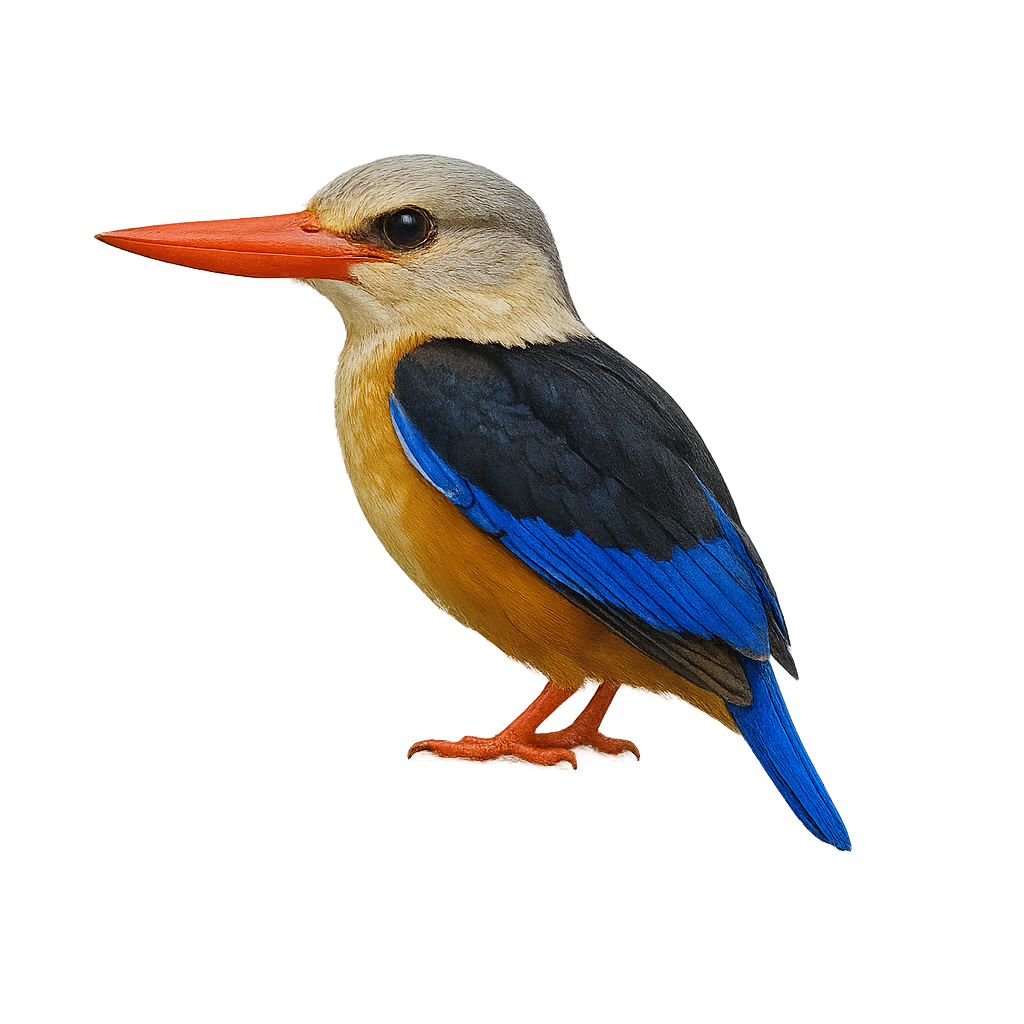Observe and photograph a species in its natural habitat
Learn where and when to observe a species in the wild, how to recognize it in the field, and what habitats it lives in. Get photography tips adapted to its behavior and capture stunning images without disturbing the animal. For full details, open the complete profile in the WildlifePhotographer app.
White-headed kingfisher
Scientific name: Halcyon leucocephala

IUCN Status: Least Concern
Family: ALCEDINIDAE
Group: Birds
Shyness: Suspicious
Safe distance: 20 m
Breeding season / Courtship: 01.06-31.08
Gestation: N/A
Births: 01.08-30.09
Habitat:
Coastal zones, forests, and swamps of South and Southeast Asia, particularly in wooded areas near rivers, lakes, and mangroves
Description:
The Grey-headed Kingfisher is a medium-sized bird, easily recognized by its grey head and colorful plumage. It measures about 25 cm in length and weighs between 50 and 70 g. Its back is typically metallic blue, with a contrasting white belly, and its wings are bright blue with touches of green and orange. This kingfisher is distinguished by its wide, straight bill, suited for hunting. It primarily lives in wooded areas and along the shores of rivers and lakes, where it feeds mainly on fish, aquatic insects, and small amphibians. The Grey-headed Kingfisher hunts by diving from a perch or electrical wire, capturing its prey with great precision. These birds are solitary, although some form pairs during the breeding season. It is widely distributed in Southeast Asia, particularly in India, Bangladesh, and Myanmar. While its population remains relatively stable, the Grey-headed Kingfisher can be threatened by habitat destruction, water pollution, and poaching.
Recommended lens:
>=400 mm
Photography tips:
Use a telephoto lens to photograph this Grey-headed Kingfisher, especially when it dives or perches on branches. The soft light of the morning or evening is ideal for capturing its bright colors and fast movements. Be discreet and respect their space to avoid disturbing their natural behavior, especially during the breeding season.
Ready to take action?
Choose your platform and start your free trial today



